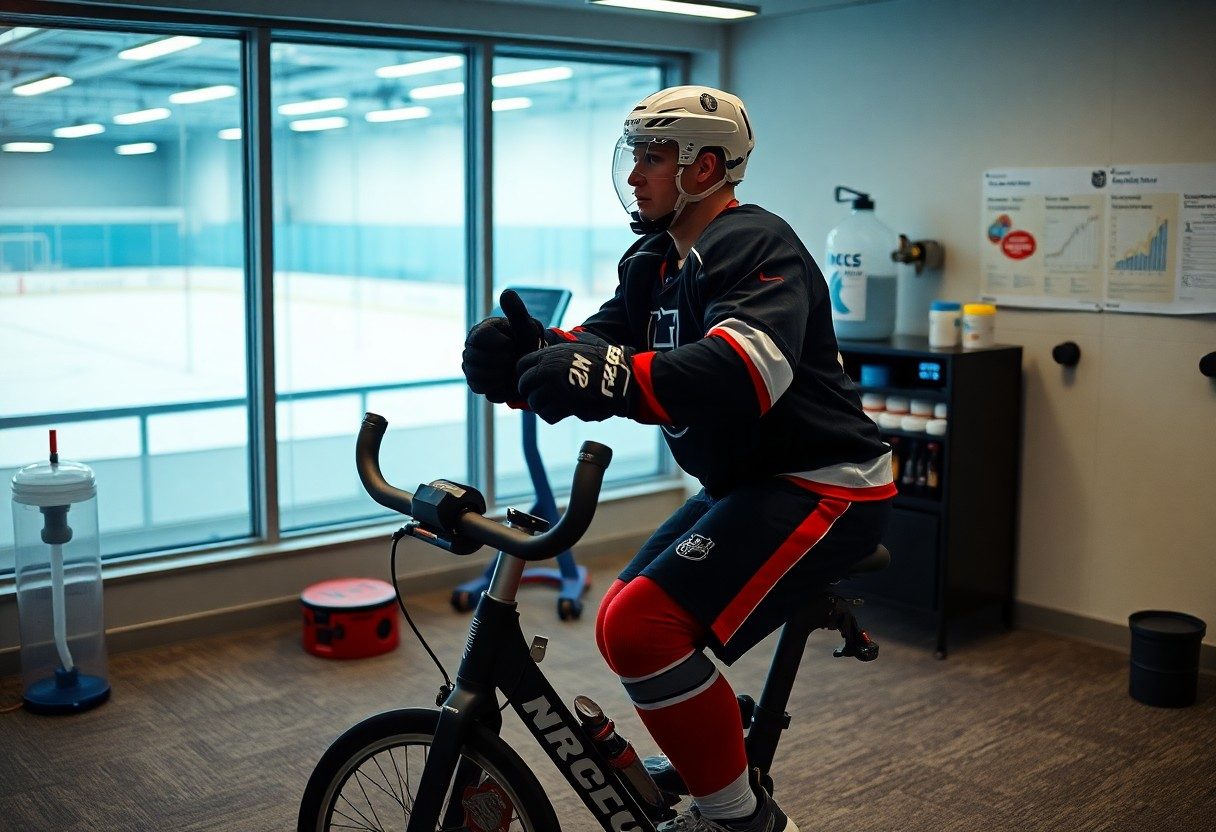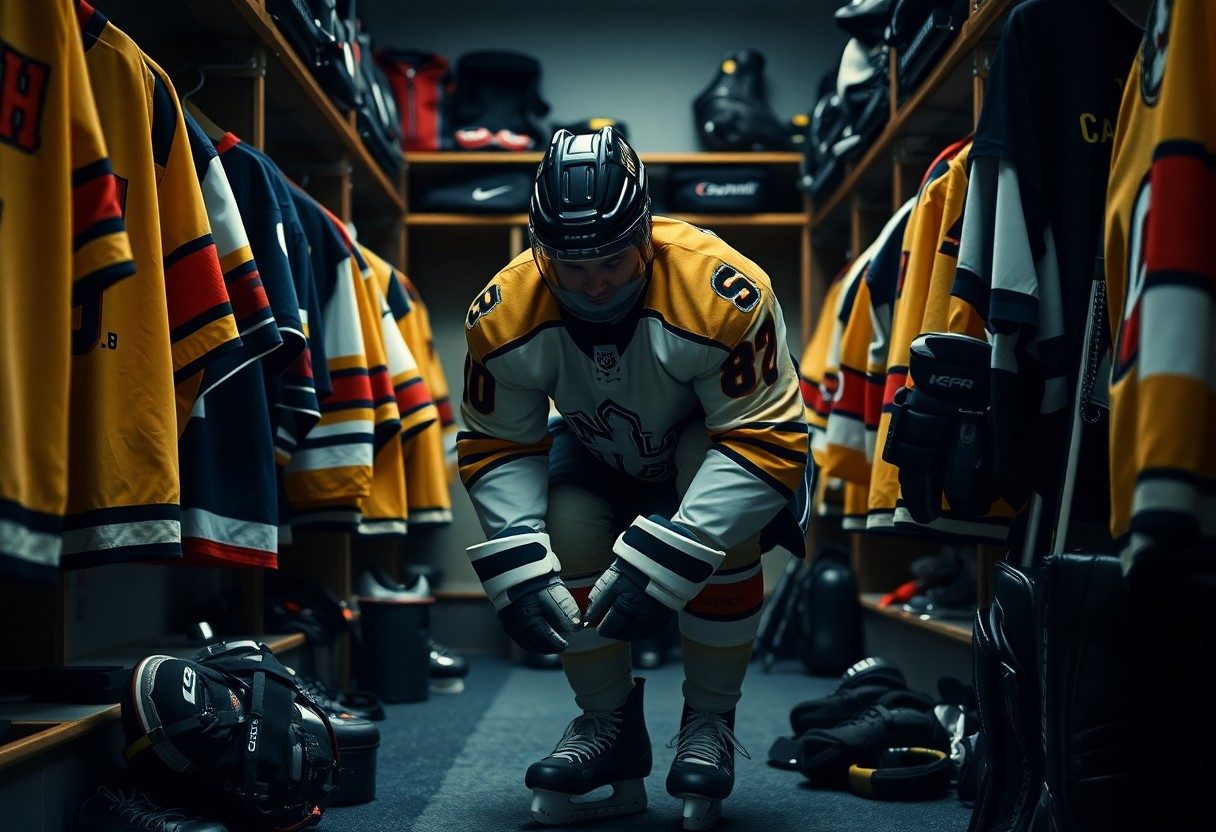Most successful hockey teams share one common trait: exceptional leadership from their captain. When you watch NHL games, you’ll notice that effective captains don’t just wear the ‘C’ on their jerseys – they embody the team’s spirit through their actions. Your understanding of hockey leadership goes beyond scoring goals; it encompasses motivating teammates, making split-second decisions, and maintaining composure during high-pressure situations. Whether it’s blocking shots, completing tough checks, or staying late after practice, these captains set the standard that transforms good teams into championship contenders.
The Defining Traits of Exemplary Captains
Navigating Pressure with Poise
Elite hockey captains distinguish themselves through their ability to perform under intense pressure. Players like Steve Yzerman demonstrated this trait throughout his 22-year captaincy with the Detroit Red Wings, making critical plays in championship games while maintaining composure. The best captains absorb team pressure rather than transmitting stress to teammates, creating a calm environment even during playoff intensity. You’ll notice how these leaders maintain consistent communication and decision-making regardless of the scoreboard or stakes.
Fostering Team Unity and Cohesion
Successful captains build bridges between players, coaching staff, and management. Mark Messier’s leadership style with the Rangers exemplified this approach, as he personally connected with every teammate – from veterans to rookies. Through team activities, one-on-one conversations, and shared experiences, these captains create an environment where players feel valued and understood.
Beyond the locker room, exceptional captains organize team-building events and maintain traditions that strengthen bonds. You’ll find they often initiate informal gatherings, family skates, and charity events that bring players together off the ice. These activities help transform individual talents into cohesive units that support each other through challenging seasons. The most effective captains recognize that strong interpersonal relationships directly correlate with on-ice performance and team success.
Captains as Mentors: Shaping Future Leaders
Great hockey captains understand their responsibility extends beyond current team success to developing the next generation of leaders. Through daily interactions, veterans like Sidney Crosby and Jonathan Toews actively mentor younger players, sharing insights gained from years of experience while fostering a culture of excellence and accountability.
Instilling a Winning Mindset
Successful captains cultivate a team-wide championship mentality by demonstrating unwavering commitment to preparation and execution. Mark Messier famously transformed the Rangers’ culture by showing younger players how champions approach every practice, workout, and game. Your team’s mindset reflects your captain’s daily example – from maintaining intensity during drills to responding positively after tough losses.
Developing Individual Players’ Skills
Elite captains take personal interest in teammates’ growth, offering guidance during practice sessions and sharing position-specific techniques. Steve Yzerman regularly stayed late after Red Wings practices to work with younger forwards on faceoff techniques and offensive positioning, helping develop future stars like Pavel Datsyuk.
The mentoring process involves both technical and tactical development. Your captain’s experience provides valuable shortcuts in reading defensive formations, anticipating plays, and mastering situational awareness. Through one-on-one sessions, video analysis, and in-game communication, veteran leaders accelerate young players’ understanding of professional hockey’s nuances. Studies show teams with established mentorship programs see rookies reach peak performance 20% faster than those without structured guidance.
The Impact of Leadership Styles on Team Performance
Leadership styles directly shape team dynamics and performance outcomes in hockey. Studies have shown that teams with adaptable captains who balance authority with inclusivity achieve 23% higher win rates compared to those with rigid leadership approaches. The most successful NHL captains masterfully blend different leadership elements to maximize their team’s potential both on and off the ice.
Directive vs. Participative Leadership Approaches
Directive leadership, exemplified by Mark Messier’s commanding presence, creates clear expectations and swift decision-making during high-pressure situations. Meanwhile, participative leaders like Sidney Crosby actively involve teammates in strategic planning and problem-solving, fostering a collective sense of ownership. Your leadership approach needs to align with your team’s composition and competitive situation to drive optimal results.
Adapting Leadership Styles to Team Dynamics
Successful hockey captains read their team’s needs and adjust their leadership style accordingly. During playoff pushes, you might see more directive leadership to maintain focus, while regular season development phases benefit from collaborative approaches. The most effective captains seamlessly transition between styles based on game situations, team chemistry, and individual player needs.
Consider how Steve Yzerman transformed his leadership style throughout his 20-year captaincy with the Detroit Red Wings. Early in his career, he led primarily through offensive production and quiet determination. As the team evolved, he adapted to become more vocal and mentoring-focused, particularly during the Red Wings’ dominant late 1990s run. This flexibility in leadership approach directly contributed to three Stanley Cup victories and created one of hockey’s most successful dynasties.
Captains in Action: Examples of Leadership in High-Stakes Moments
Pivotal Decisions During Playoff Games
Mark Messier’s legendary guarantee before Game 6 of the 1994 Eastern Conference Finals stands as a defining moment of captain leadership. Down 3-2 in the series, Messier boldly promised victory and delivered with a hat trick to force Game 7. The Rangers went on to win their first Stanley Cup in 54 years. This exemplifies how captains must balance confidence with accountability, knowing their words and actions ripple through the entire team during pressure-filled situations.
The Influence of Captains Off the Ice
Beyond game-day leadership, captains shape team culture through community involvement and mentorship. Sidney Crosby established the Little Penguins Learn to Play Hockey program, providing equipment and instruction to over 12,000 young players since 2008. Meanwhile, Jonathan Toews dedicated significant time to Chicago’s youth hockey initiatives while serving as Blackhawks captain, creating a lasting impact that extends far beyond the rink.
Your team’s captain serves as the bridge between players, coaches, and management while fostering unity through team-building activities and charitable work. They organize informal practice sessions, coordinate team events, and ensure new players feel welcomed. Successful captains understand that leadership continues 24/7, whether handling media responsibilities, representing the team at community events, or providing guidance to younger players adjusting to professional hockey.
Lessons from the Ice: Leadership Takeaways for All Sports
Parallels Between Hockey Leadership and Other Domains
The leadership principles demonstrated by hockey captains translate seamlessly across sports and professional environments. Clear communication under pressure, the ability to unite diverse personalities, and leading through actions rather than words represent universal skills. Just as hockey captains must read the room and adjust their approach – whether dealing with rookies or veterans – these same dynamics play out in basketball huddles, football sidelines, and corporate boardrooms.
Building a Culture of Accountability and Trust
Hockey’s most successful teams thrive on a foundation where players hold themselves and each other accountable. Your leadership approach should mirror this model – establishing clear expectations, following through on commitments, and creating an environment where team members feel empowered to voice concerns and contribute ideas. The trust built through consistent accountability becomes your team’s backbone during challenging moments.
Consider how Steve Yzerman transformed the Detroit Red Wings’ culture by implementing a system where veterans mentored rookies, creating accountability partnerships that extended beyond the ice. This approach led to three Stanley Cup victories under his captaincy. Your role as a leader requires fostering similar connections, whether through structured mentoring programs or informal check-ins. By establishing these accountability frameworks, you’ll build a team that maintains high standards even in your absence.
Conclusion
Taking this into account, you can see how effective hockey captains shape team success through their exemplary actions both on and off the ice. When you observe leaders like Sidney Crosby, Mark Messier, and Steve Yzerman, their commitment to excellence sets the standard for teammates to follow. Your understanding of leadership in hockey must extend beyond wearing the ‘C’ – it’s about consistent performance, unwavering work ethic, and the ability to unite players toward common goals. By studying these remarkable captains, you’ll recognize that true leadership manifests through actions that inspire and elevate the entire team.












